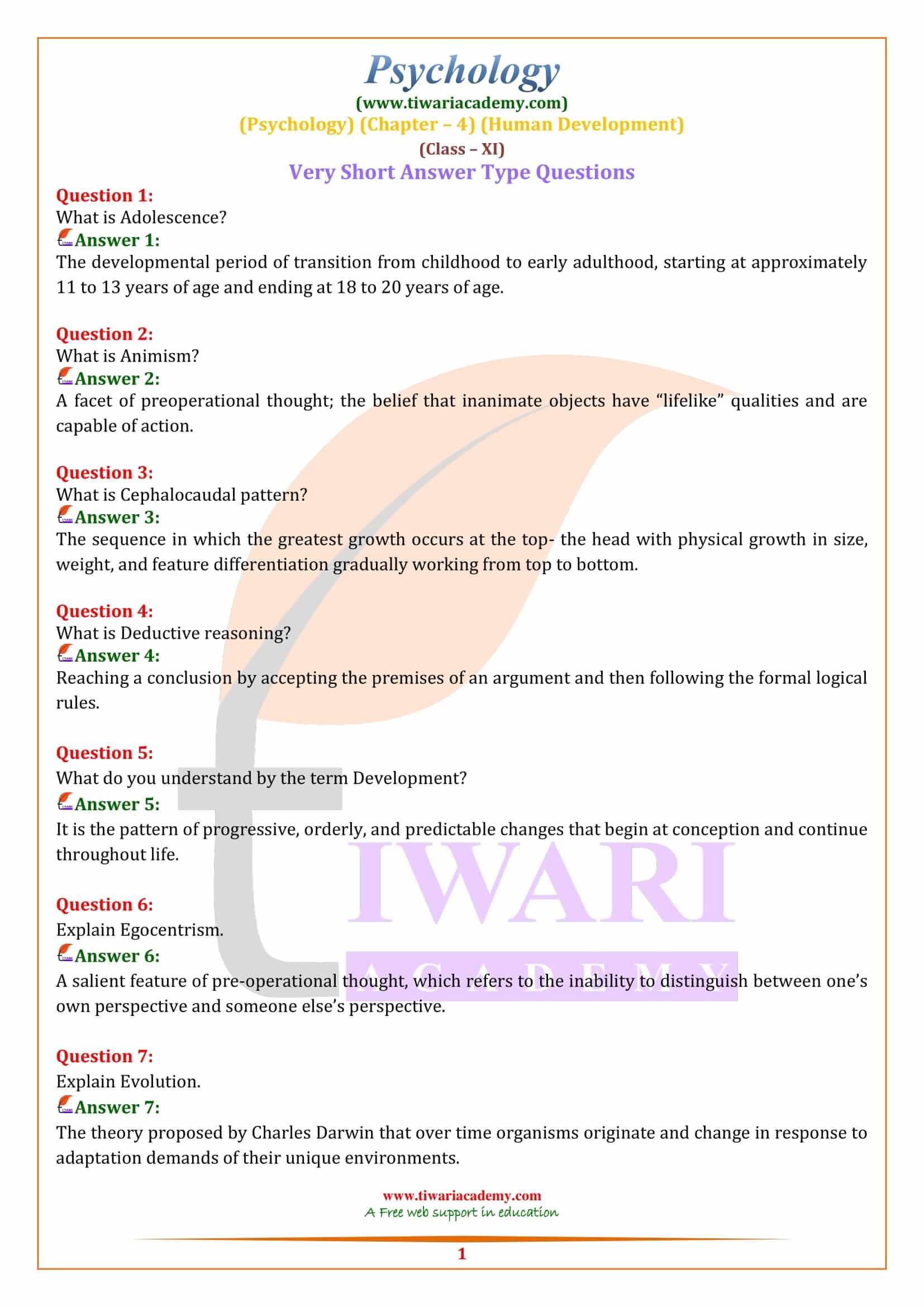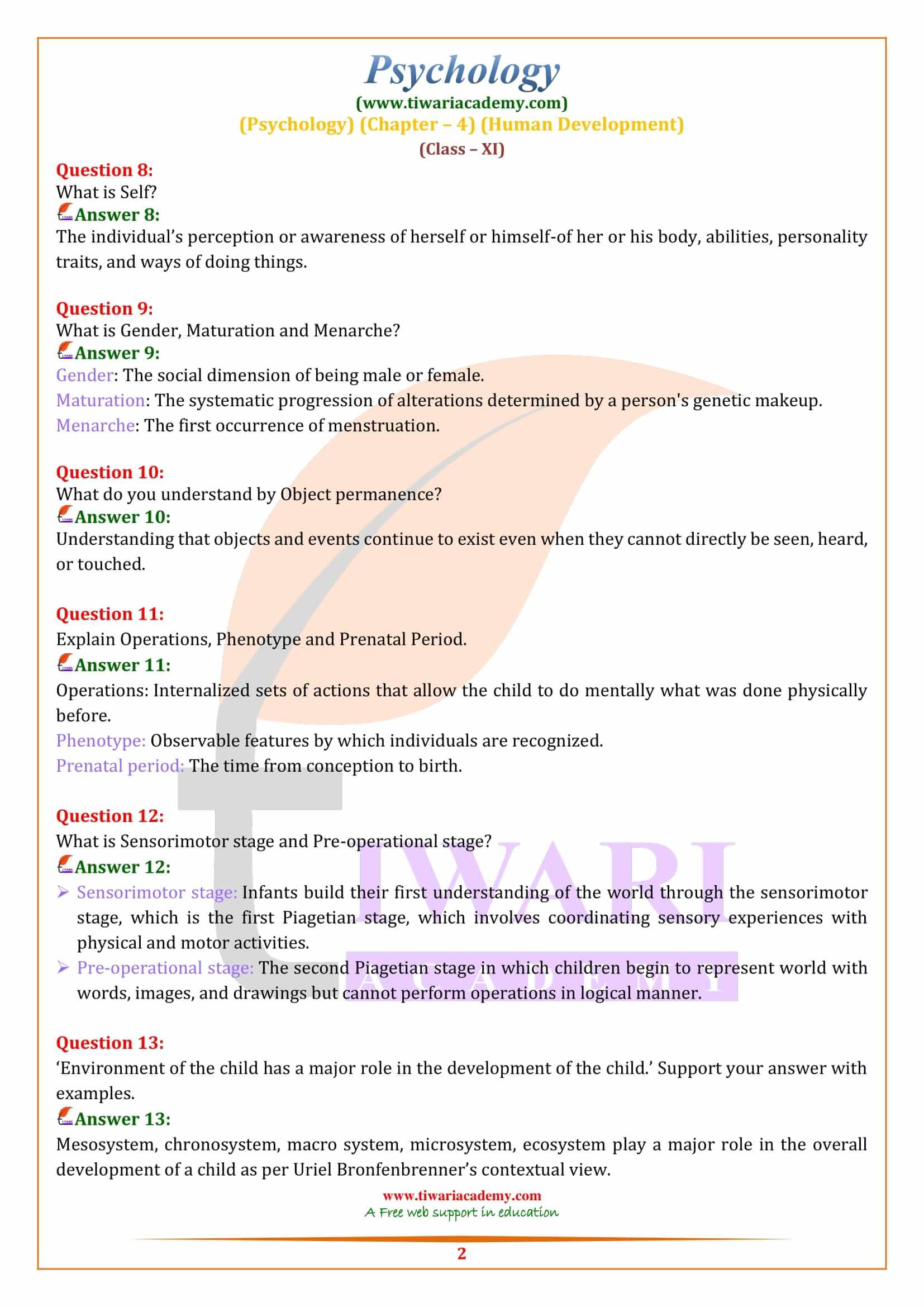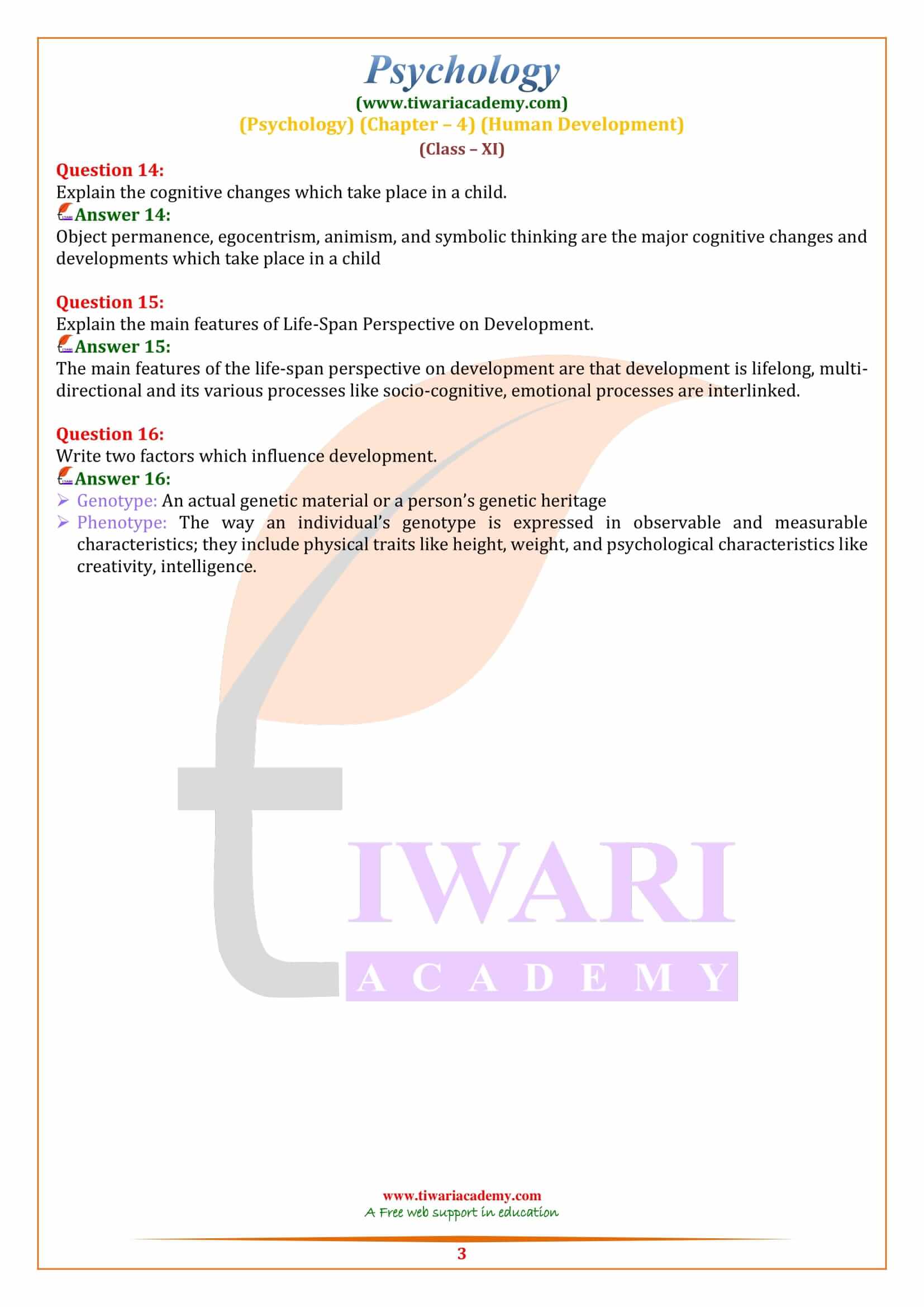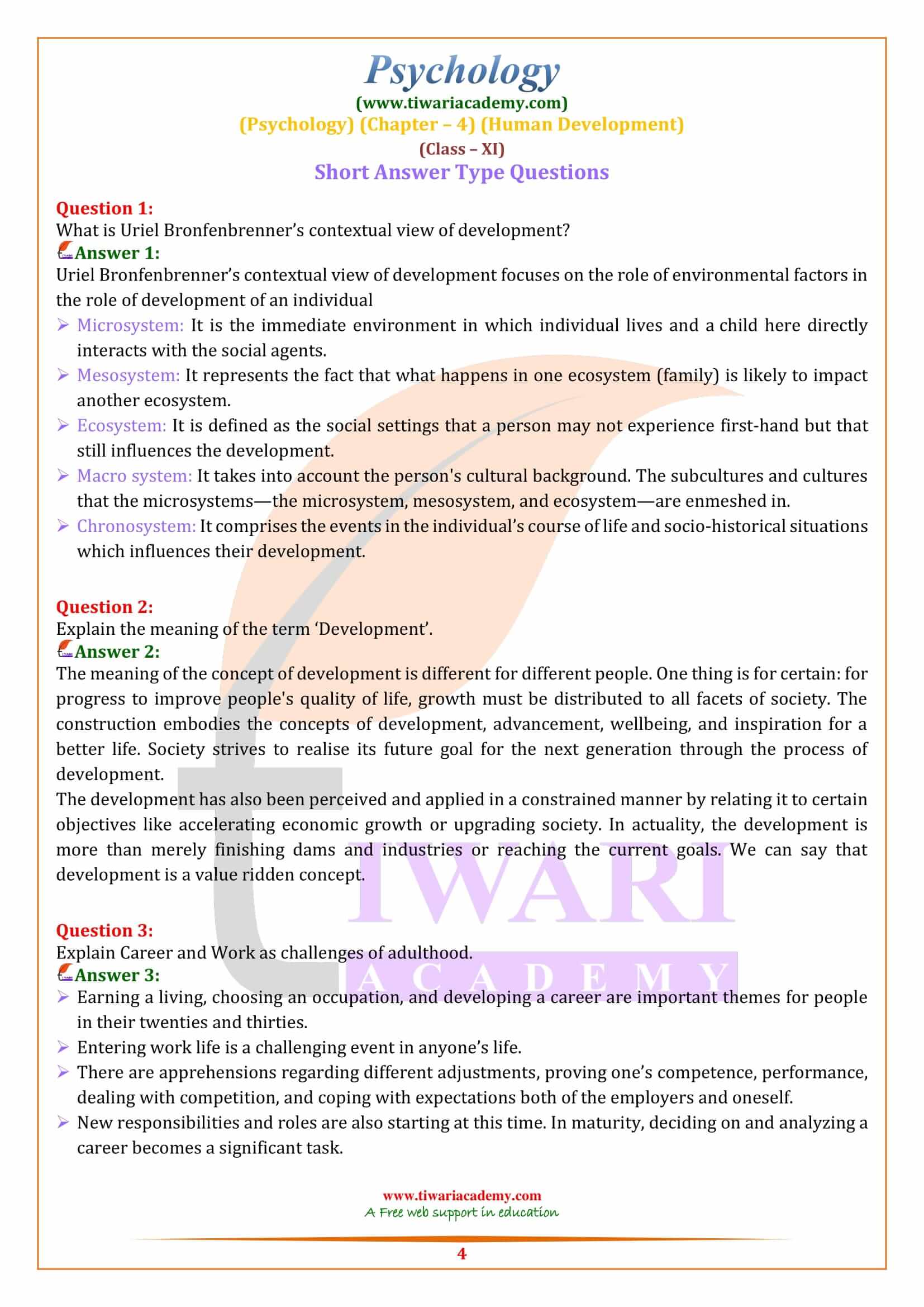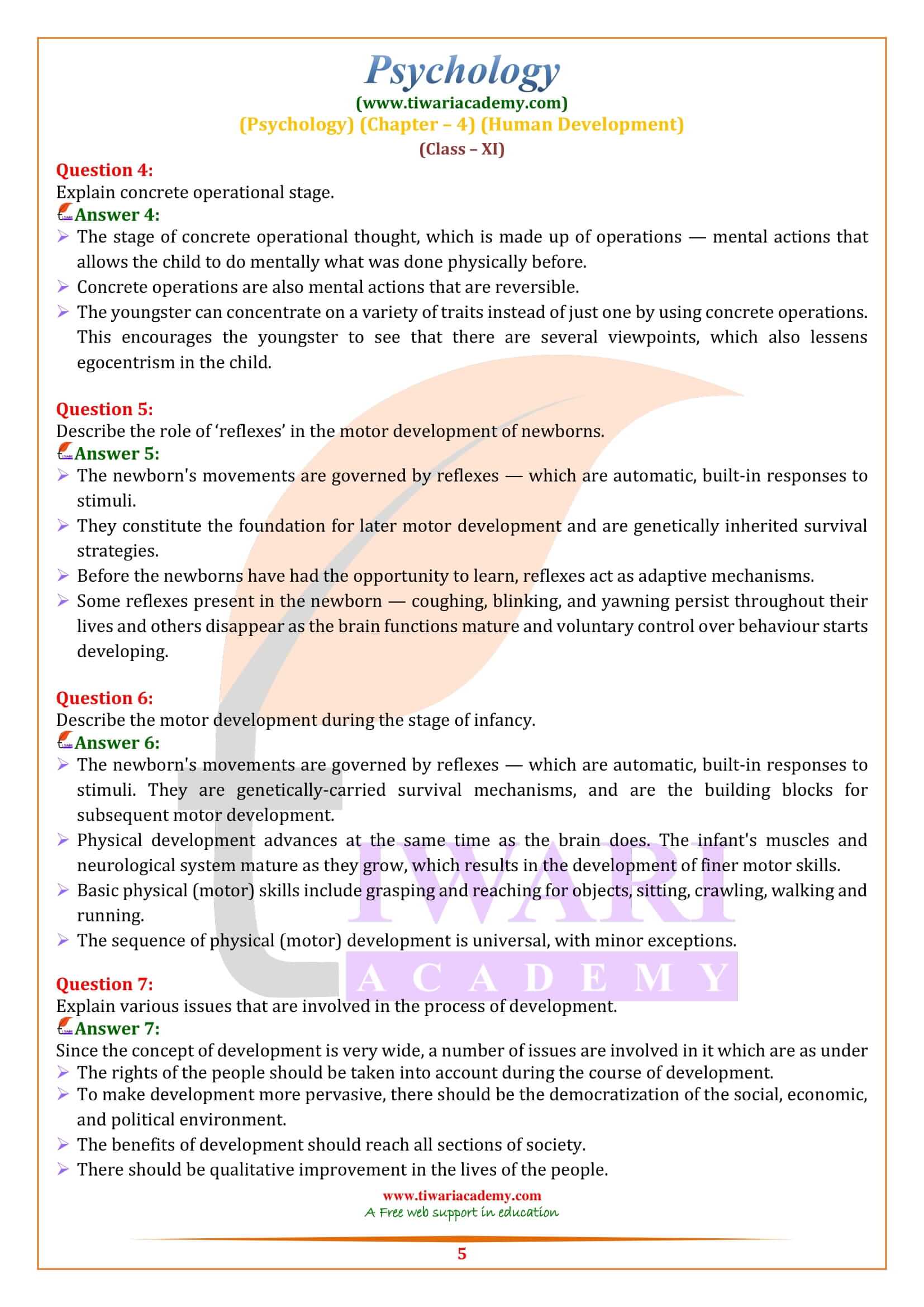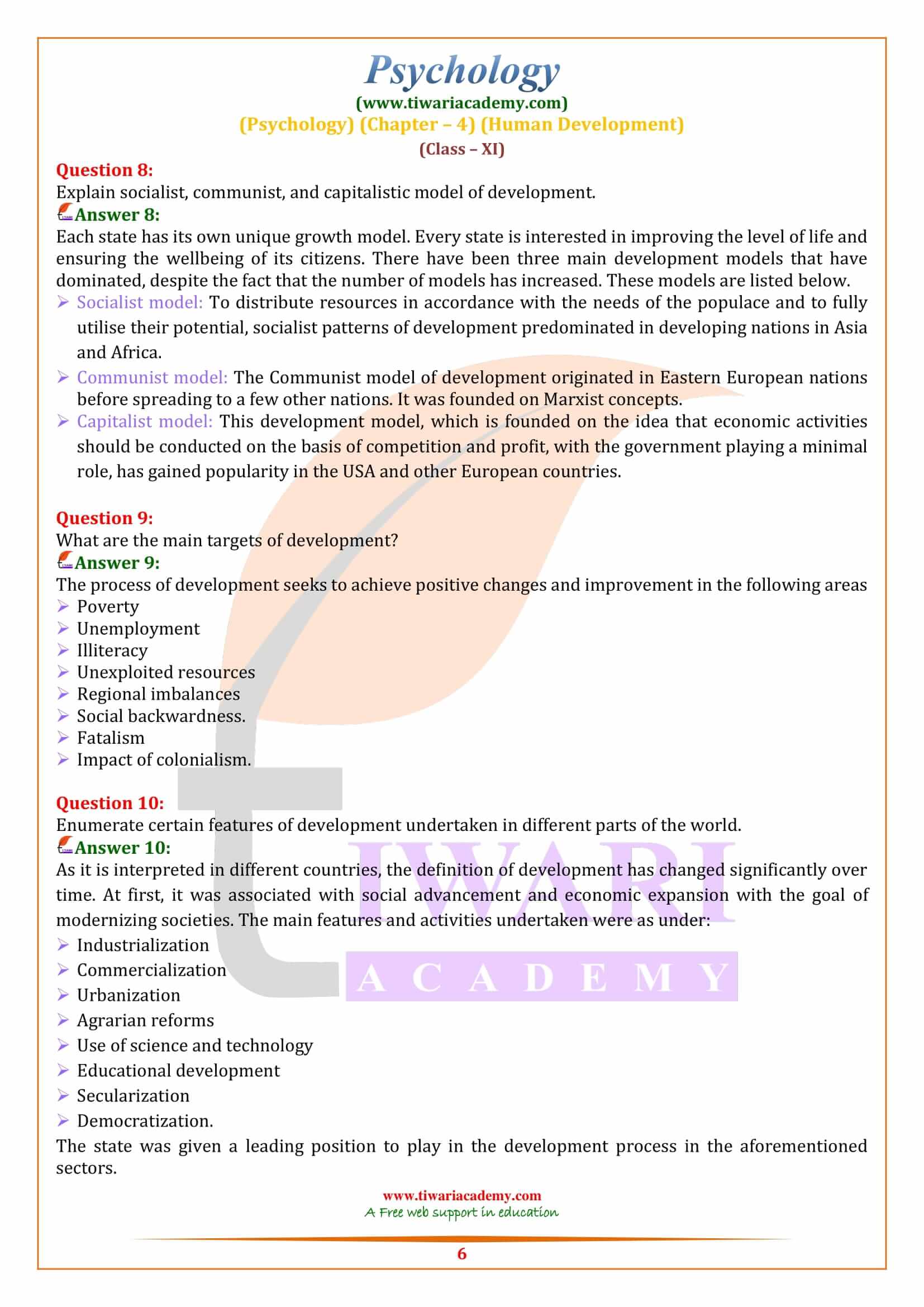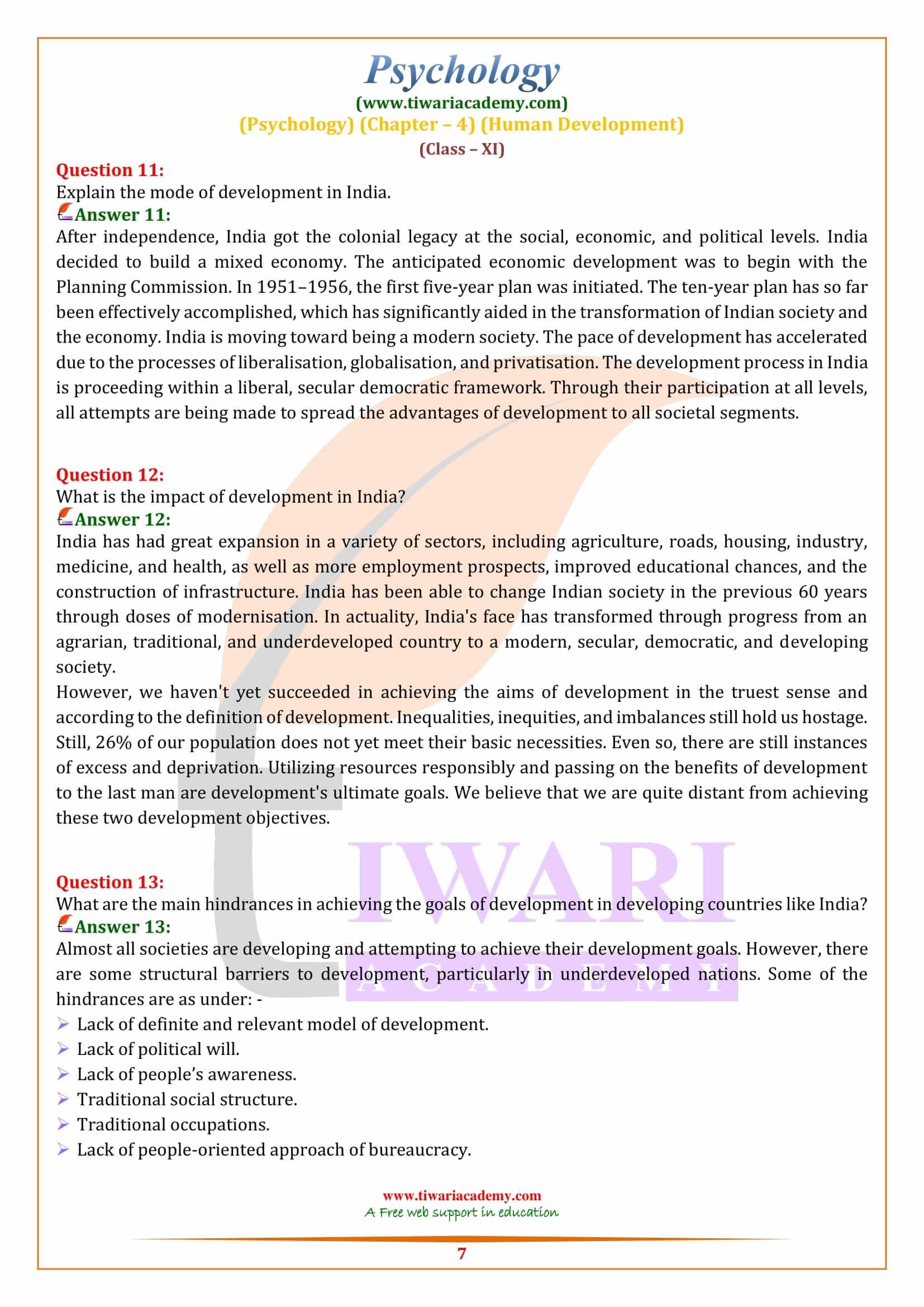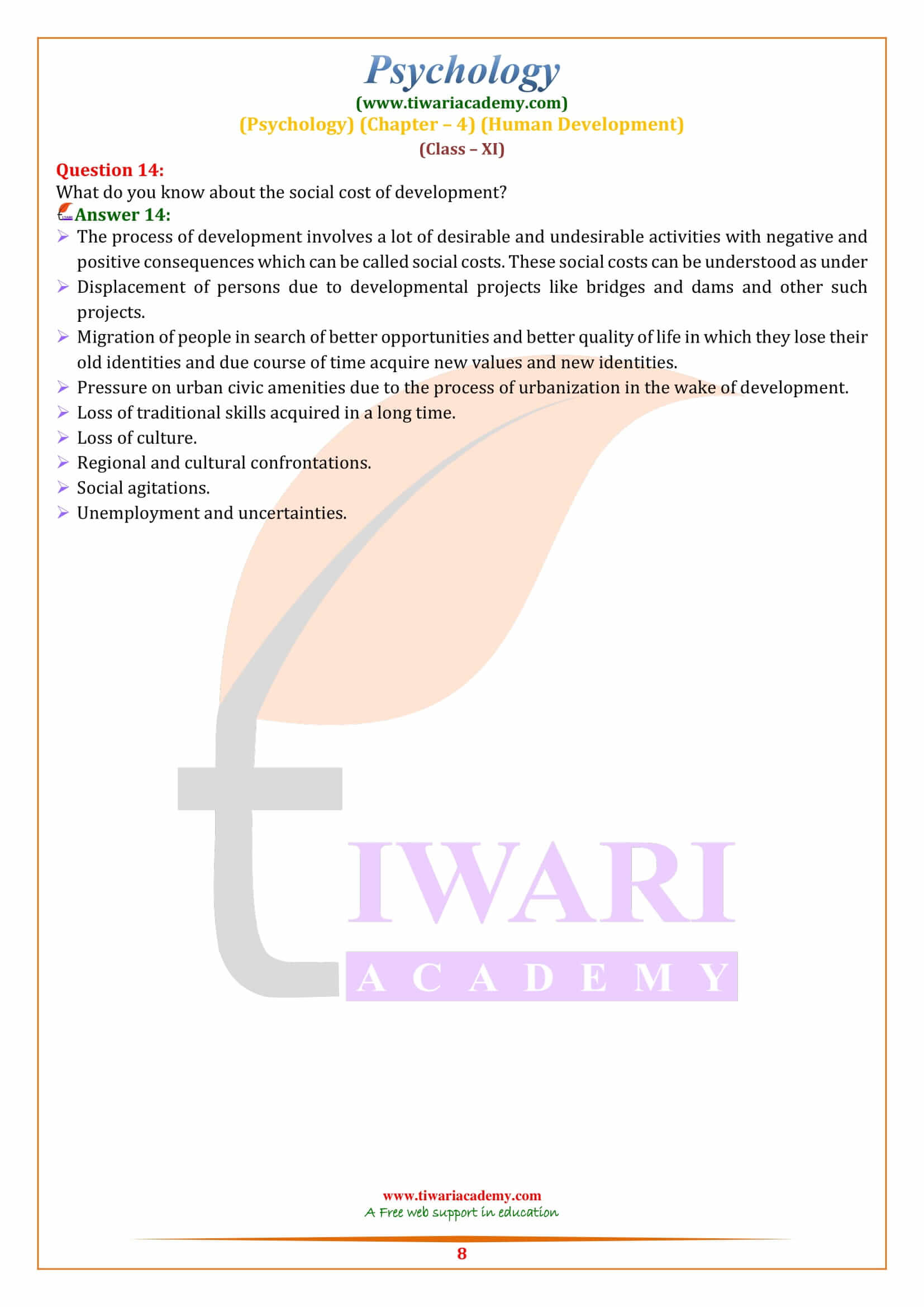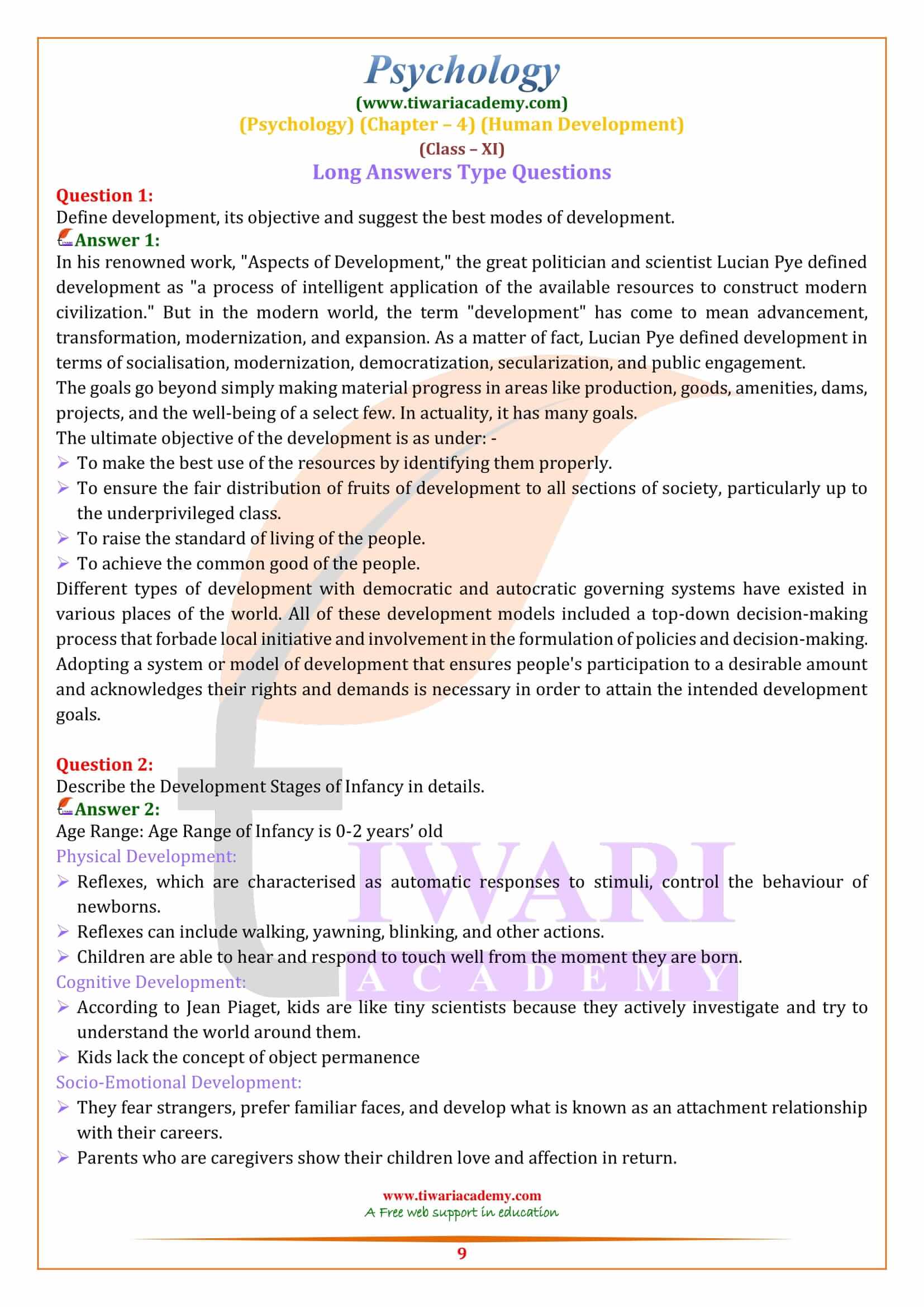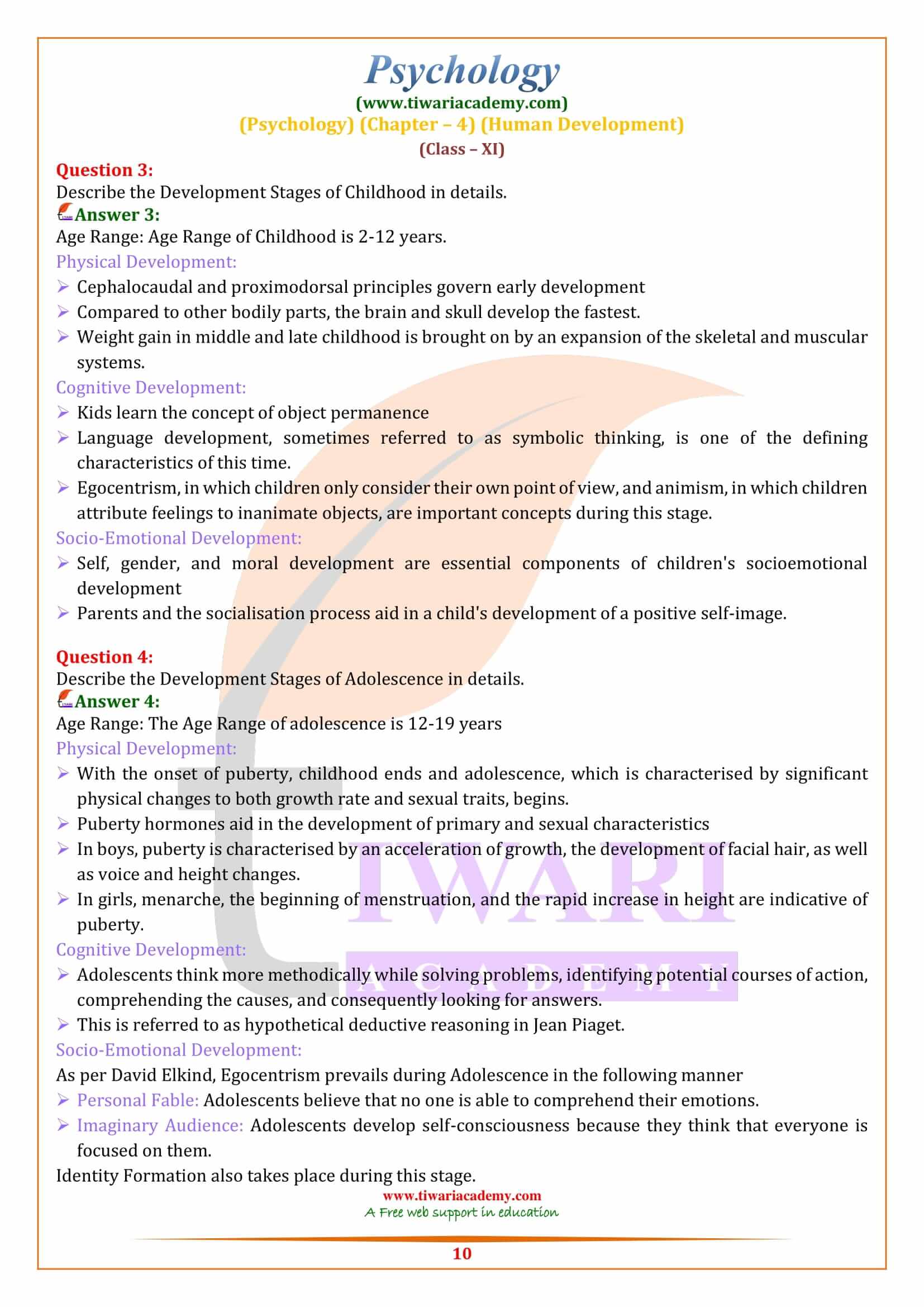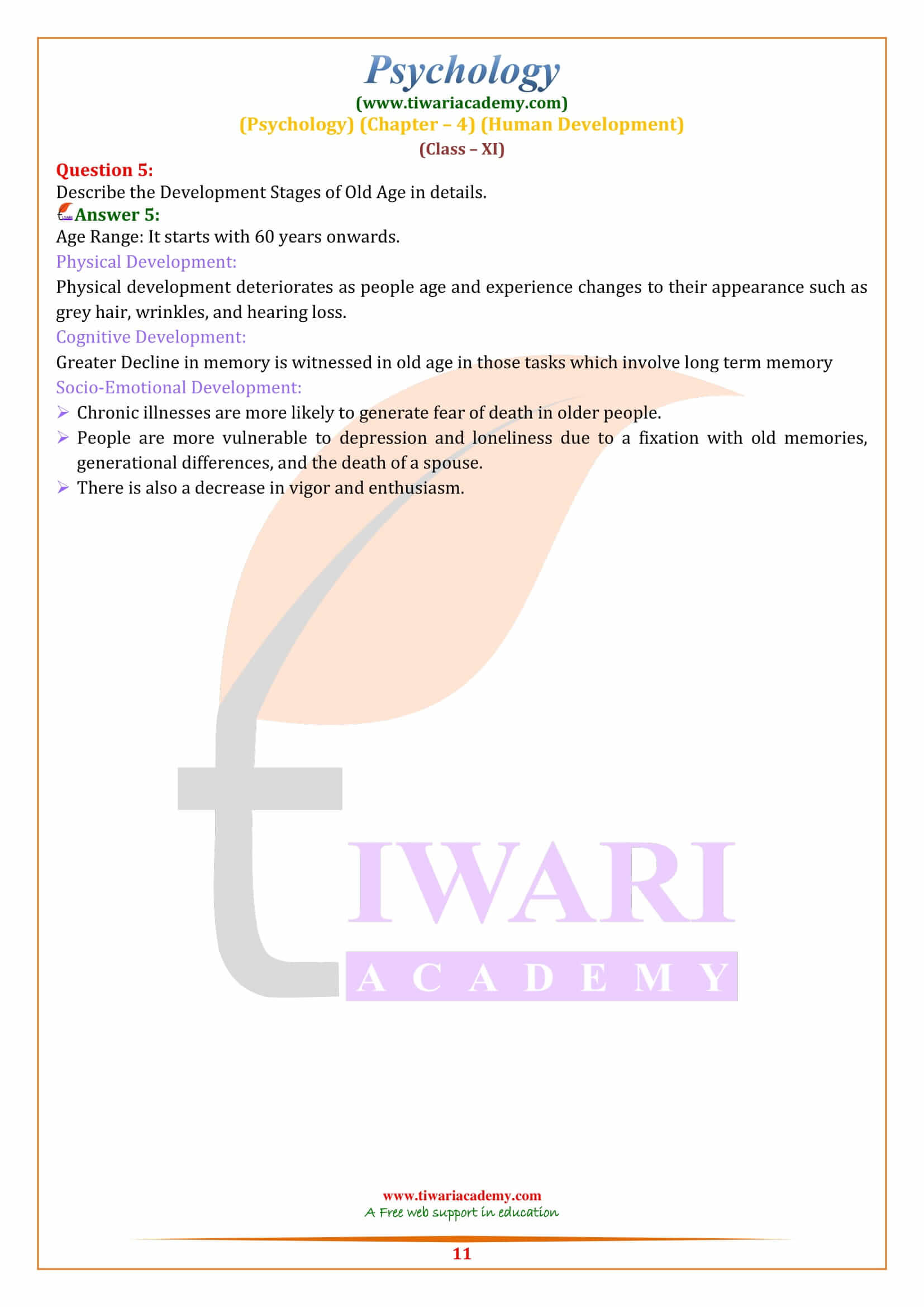Class 11 Psychology Chapter 4 Important Questions Human Development in English Medium modified for new session CBSE 2025-26. All the MCQ questions which are important for board exams are given here with Extra Question Answers for the preparation of school exams.
Explain socialist, communist, and capitalistic model of development.
Each state has its own unique growth model. Every state is interested in improving the level of life and ensuring the wellbeing of its citizens. There have been three main development models that have dominated, despite the fact that the number of models has increased. These models are listed below.
- Socialist model: To distribute resources in accordance with the needs of the populace and to fully utilise their potential, socialist patterns of development predominated in developing nations in Asia and Africa.
- Communist model: The Communist model of development originated in Eastern European nations before spreading to a few other nations. It was founded on Marxist concepts.
- Capitalist model: This development model, which is founded on the idea that economic activities should be conducted on the basis of competition and profit, with the government playing a minimal role, has gained popularity in the USA and other European countries.
Explain the mode of development in India.
After independence, India got the colonial legacy at the social, economic, and political levels. India decided to build a mixed economy. The anticipated economic development was to begin with the Planning Commission. In 1951–1956, the first five-year plan was initiated. The ten-year plan has so far been effectively accomplished, which has significantly aided in the transformation of Indian society and the economy.
India is moving toward being a modern society. The pace of development has accelerated due to the processes of liberalisation, globalisation, and privatisation. The development process in India is proceeding within a liberal, secular democratic framework. Through their participation at all levels, all attempts are being made to spread the advantages of development to all societal segments.
What is the impact of development in India?
India has had great expansion in a variety of sectors, including agriculture, roads, housing, industry, medicine, and health, as well as more employment prospects, improved educational chances, and the construction of infrastructure. India has been able to change Indian society in the previous 60 years through doses of modernisation. In actuality, India’s face has transformed through progress from an agrarian, traditional, and underdeveloped country to a modern, secular, democratic, and developing society.
However, we haven’t yet succeeded in achieving the aims of development in the truest sense and according to the definition of development. Inequalities, inequities, and imbalances still hold us hostage. Still, 26% of our population does not yet meet their basic necessities. Even so, there are still instances of excess and deprivation. Utilizing resources responsibly and passing on the benefits of development to the last man are development’s ultimate goals. We believe that we are quite distant from achieving these two development objectives.
Describe the Development Stages of Infancy in details.
Age Range: Age Range of Infancy is 0-2 years’ old
Physical Development:
Reflexes, which are characterised as automatic responses to stimuli, control the behaviour of newborns.
Reflexes can include walking, yawning, blinking, and other actions.
Children are able to hear and respond to touch well from the moment they are born.
Cognitive Development:
According to Jean Piaget, kids are like tiny scientists because they actively investigate and try to understand the world around them.
Kids lack the concept of object permanence
Socio-Emotional Development:
They fear strangers, prefer familiar faces, and develop what is known as an attachment relationship with their careers.
Parents who are caregivers show their children love and affection in return.
Describe the Development Stages of Childhood in details.
Age Range: Age Range of Childhood is 2-12 years
Physical Development:
- Cephalocaudal and proximodorsal principles govern early development
- Compared to other bodily parts, the brain and skull develop the fastest.
- Weight gain in middle and late childhood is brought on by an expansion of the skeletal and muscular systems.
Cognitive Development:
Kids learn the concept of object permanence
Language development, sometimes referred to as symbolic thinking, is one of the defining characteristics of this time.
Egocentrism, in which children only consider their own point of view, and animism, in which children attribute feelings to inanimate objects, are important concepts during this stage.
Socio-Emotional Development:
Self, gender, and moral development are essential components of children’s socioemotional development
Parents and the socialisation process aid in a child’s development of a positive self-image.
Describe the Development Stages of Adolescence in details.
Age Range: The Age Range of adolescence is 12-19 years
Physical Development:
With the onset of puberty, childhood ends and adolescence, which is characterised by significant physical changes to both growth rate and sexual traits, begins.
Puberty hormones aid in the development of primary and sexual characteristics
In boys, puberty is characterised by an acceleration of growth, the development of facial hair, as well as voice and height changes.
In girls, menarche, the beginning of menstruation, and the rapid increase in height are indicative of puberty.
